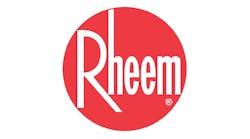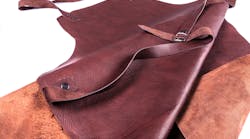Latest from Hydronics & Radiant
Sponsored
Benjamin Franklin is a name that we are all familiar with. Most know that he was one of the many founding fathers of the country where we live and work. He is famous for developing the lightning rod and the Franklin stove, but not so well known for inventing the first swim fins. Possibly you know about his early experiments trying to harness the power of electricity.
He was also one of those guys that gets more interesting the more you find out about him. Early on he was a printer by trade, who went through an apprenticeship, then quickly was able to start his own printing company. Sounds like the career track of a lot of readers if you substitute plumber/wet heat guy for printer.
Franklin was a tradesman who worked with his hands before he became a statesman who worked with his head and heart. Printing in the mid 1700s was a physically demanding activity. He didn’t sit at a computer to compose a document and then hit the print button. He had to set the type by hand, put it in the press, ink it, set the paper, spin the handle, pull out the paper, and hang up to dry. Repeating the process many, many times.
The Leather Apron Club
Legend has it that he outworked his competition by printing until 11:00 o’clock at night, every night of the week except for Friday. On Friday nights he met with friends. They started in 1727 and called themselves the Leather Apron Club, probably because Franklin showed up in his work clothes.
Franklin wanted a group of “ingenious men” from different walks of life to share what they had learned that week. The purpose was to advance their knowledge and improve society. Of course, other topics, like the founding of a new nation, might creep into their conversations. This was Philadelphia.
Here’s one of those interesting facts you learn as you dig deeper. Franklin was a prolific inventor, but didn’t patent any one of them. I wasn’t expecting that. In his own words, “That as we enjoy great Advantages from the inventions of others, we should be glad of an Opportunity to serve others by any invention of ours; and this we should do freely and generously.”
What a lovely way to view life. Rather than dog eat dog, share your improvement for the greater good. Bringing it around to the hydronic world, share your knowledge with your peers. In my case, I visit job sites on a regular basis and meet with contractors, homeowners, installers, and sometime friendly dogs to explain how our equipment works and/or installs.
Sharing Knowledge
Recently I drove three hours one-way to meet with a young contractor who asked for my help with retiring a boiler system or systems in a large funeral home complex. He didn’t sound sure about what was there. He wouldn’t be buying any boilers or pumps since the place was almost done converting to mini-splits. But our company philosophy is to help our customers at almost any cost, so I went to see what I could do.
Turned out to be a good idea to put eyes on it. We spent a good hour going through the heating systems of two buildings that now shared one boiler. The old building had pieces of an abandoned steam system and a hot water boiler serving a part of the building. And of course, like almost every other funeral home I’ve been in, a few dead bodies lying around the embalming room.
I explained what all the components were, what they did, and how to retire them. The new building’s original mid-century hydronic system consisted of a radiant basement floor, and five other zones of convector radiation connected from manifolds in the boiler room ceiling to the convectors in the wall with 3/8” copper pipe, run as a continuous loop without solder joints, like we snake PEX pipe today.
That system was already abandoned in the mid 70’s and replaced by a hot water/chilled water system with its own boiler and chiller and piping. Each building already was on its second heating system when they started to convert to the (now third) mini-split system. Quite a timeline of heating/cooling technology, each time improving the comfort of the people that worked and visited there.
Coincidentally, after I decided to use a Ben Franklin theme to this article, I found this photo of my oldest son. He won a $100 savings bond for that costume. Hard to tell from the pose, but he grew up playing hockey. He’s a tech guy, but like Franklin has other skills, like cooking, plumbing, drywall and now welding. I’m proud that he’s learned some trades. His knowledge usually comes from YouTube, a great place where people freely share their skills.
Speaking of pictures, did you notice my new head shot? I recently had it updated to be authentic, the original idea for the Franklin theme, since I learned from a PBS documentary that he was big on authenticity. One of the virtues he learned from others was humility. Just trying to keep it real.
Patrick Linhardt is a thirty-seven-year veteran of the wholesale side of the hydronic industry who has been designing and troubleshooting steam and hot water heating systems, pumps and controls on an almost daily basis. An educator and author, he is currently Hydronic Manager at the Corken Steel Products Co.
Patrick Linhardt
Patrick Linhardt is a forty-one-year veteran of the wholesale side of the hydronic industry who has been designing and troubleshooting steam and hot water heating systems, pumps and controls on an almost daily basis. An educator and author, he is currently Hydronic Manager at the Corken Steel Products Co.



